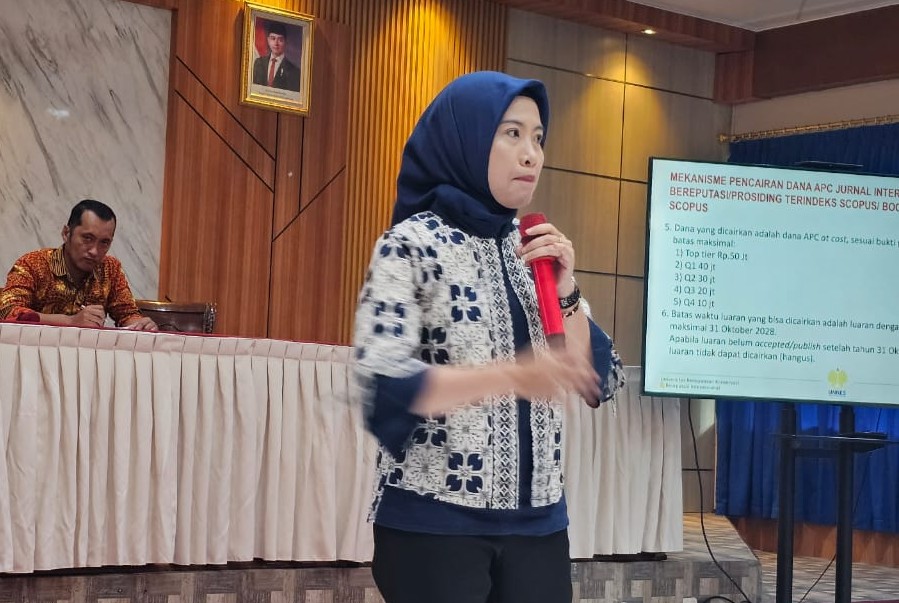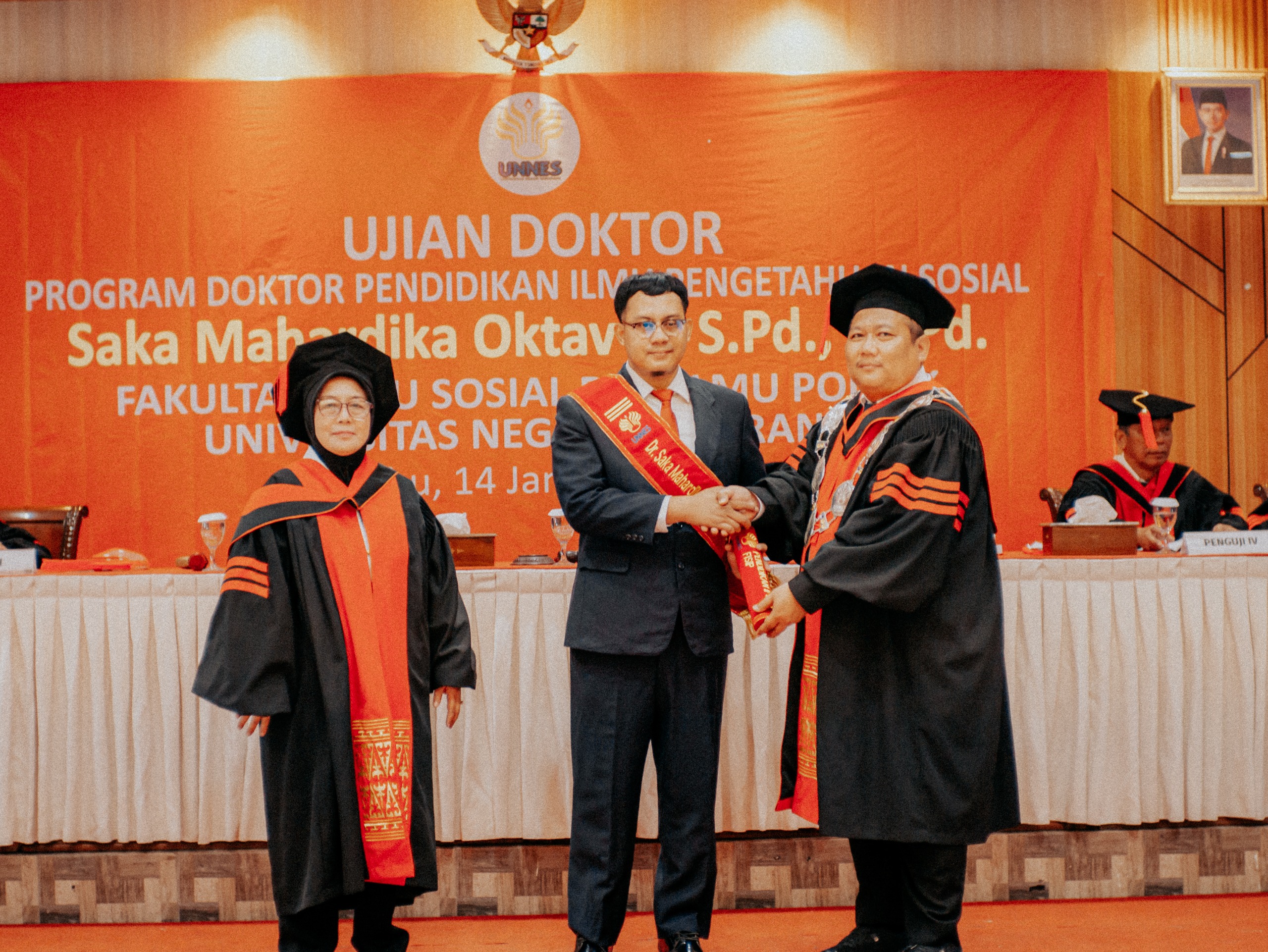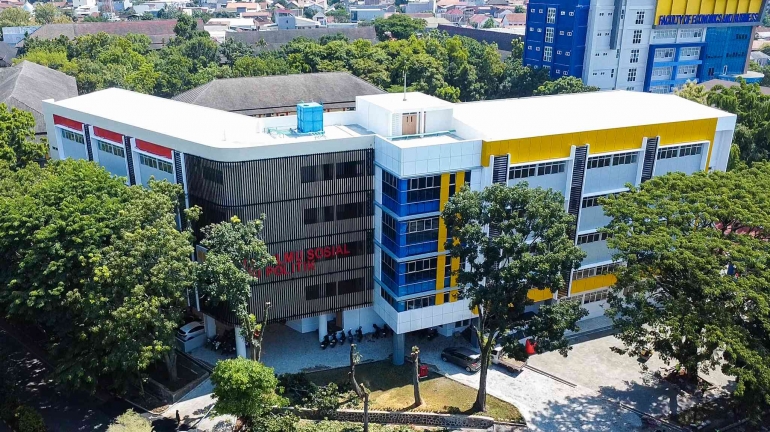Semarang Pelangi Village Tourism is located at Jalan Doctor Sutomo No. 89, Randusari Village, South Semarang, Semarang City, Central Java. This area has clear boundaries, which are bordered by Dominico Savio Middle School to the north, Bergota Public Cemetery to the east, Dr. Kariadi to the south, and Jalan Raya Doctor Sutomo to the west. Geographically, Kampung Pelangi Semarang is a village area located on the banks of the river and behind the Kalisari flower market. Initially, this village was a slum area, but later it was transformed into a clean and beautiful area through the use of colors and decorative murals on residents’ houses.
Researching creative villages has several benefits and goals that can be achieved. Here are some of them:
- Understanding Creative Villages: Researching creative villages helps to gain a deeper understanding of the characteristics, opportunities, and challenges of creative villages. It helps to know the development needs and possibilities of the village.
- Community development: Exploring creative villages can help build and strengthen local communities. By understanding community needs and expectations, research can provide useful information for better community collaboration, empowerment, and engagement.
- Local economic development: Exploring creative villages can help identify existing local economic opportunities and promote their development. This may include introducing new creative products, developing creative industries, and marketing unique local products.
- Improving the quality of life: Exploring creative villages can contribute to improving the quality of life in the community. By identifying aspects such as access to infrastructure, education, health, and environmental protection, research can provide a better understanding of how the overall quality of life can be improved.
- Preservation of local culture and heritage: Exploring creative villages can help preserve existing local culture and heritage. By understanding traditional practices, arts, and local wisdom, research can provide guidance for the preservation and development of unique cultural heritage.
- Innovation and creativity Research on creative villages can encourage innovation and creativity. By analyzing existing creative processes and practices, research can provide insights into new ways to promote and develop creative ideas in kampungs.
This goal helps create better knowledge about creative villages and provides the basis for the development of effective policies, strategies, and programs for the promotion of sustainable creative villages.

Demographic morphology in this village shows that there are around 2,266 residents, with 1,405 residents in RW 3 and 861 residents in RW 4. The age distribution of the population shows a predominance of residents aged 0–15 years in RW 3, while in RW 4, residents aged 36–61 years and over predominate. In terms of education level, the majority of Kampung Pelangi Semarang residents have a basic education level, with 54% being elementary school graduates, 20% being junior high school graduates, 15% being high school graduates, and 11% being tertiary school graduates. As for the field of work, the majority of the population works as private employees (54%), followed by other sectors (20%), flower traders (5%), grocery shop traders (7%), and civil servants (5%). In terms of governance, Kampung Pelangi Semarang has a government structure based on the Head of the RW. This village consists of two RWs, namely RW 3 and RW 4, each of which manages each RT within it. In addition, this village also has a tourism awareness group (Pokdarwis) whose task is to manage and develop tourism potential in this area. Thus, the tourism morphology of Kampung Pelangi Semarang includes a clear location, defined boundaries, and geographical conditions that are located around rivers. flower market, population demographics with diverse age distribution and educational levels, varied employment opportunities, as well as a government structure that involves the RW head and the Tourism Awareness Group (Pokdarwis) as tourism managers in the village.
If one observes Kampung Pelangi, it develops naturally where it adapts to the topographical conditions, which makes the buildings or houses of residents form a terraced pattern, namely the face from the bank of the Kali Semarang river to the east, uphill to adjust the contours to the Bergota tomb. Residents’ buildings or houses in Kampung Pelangi are permanent, semi-permanent, and non-permanentions, which makes the buildings or houses of residents form a terraced pattern, namely the face from the bank of the Kali Semarang river to the east, uphill to adjust the contours to the Bergota tomb. Residents’ buildings or houses in Kampung Pelangi are permanent, semi-permanent, and non-permanent. Kampung Pelangi is a village with a very high population density. This makes the residents’ houses close to one another. Of course, this happens because the need for houses is increasing, but Kampung Pelangi has limited land, and topographical conditions make it difficult to place houses.
Kampung Pelangi is at an altitude of 0.75 mpdl, and on its soil, it has a dry type where most of the land area functions as yards or buildings, which is the cause of Kampung Pelangi being densely populated. Kampung Pelangi has a soil loss of around 15–25%, which makes Kampung Pelangi’s slope high enough so that the road is adjusted to the slope, which is made to resemble stairs with the aim of making it easier for residents to carry out their daily activities. Every main street in every alley is connected by bridges to Jalan Dr. Sutomo. (Bappeda Semarang City, 2018).
At the front of Kampung Pelangi, there are many flower shops. The existence of this flower shop is the first step in the development of Kampung Pelangi. The existence of these shops also received support from the Semarang government in order to make Wonosari Village, which at first looked shabby, look prettier with colorful decorations and flowers in the flower shop. Based on the results of interviews, the majority of livelihoods in Kampung Pelangi are provided by private employees; most of the people or residents of this village work odd jobs or are uncertain. Of course, this is because the education of Kampung Pelangi residents is relatively low. Some residents also make money by selling flowers at the flower shops in Kampung Pelangi. Several residents also opened grocery stalls, as well as snacks such as ice, fried foods, and so on. It is endeavored to always increase because, by changing Wonosari village to Kampung Pelangi, it has the aim of advancing the economy and quality of life for the residents of Kampung Pelangi.
Kampung Pelangi Semarang is an interesting place to visit because this place is a beautiful and unique tourist attraction. When you enter this place, you will be treated to beautiful, colorful buildings that look beautiful and amazing from any angle, 3D images, ornate ornaments along the way, and some interesting photo spots. The topography of Kampung Pelangi is hilly, so visitors who will be going around have to climb the stairs to be able to enjoy the charm of Kampung Pelangi. Apart from that, with the topography of the hills, visitors can see the beauty of Semarang City from above. The entrance ticket to Kampung Pelangi is Rp. 5000 per person, and the parking fee is Rp. 2000. Before becoming a tourist attraction, Kampung Pelangi used to be a dirty and unkempt village. In this context, the camouflage of a slum village has been replaced by a unique village with colorful paint and made into a tourist attraction. Changing Kampung Pelangi aims to eliminate the image of a slum village and empower the community. Therefore, the authors conducted research to determine the role of the Kampung Pelangi community in increasing the potential of Kampung Pelangi.
This study uses a qualitative method with a descriptive approach. Researchers went directly to the research site on May 20–21, 2023. The data sources were obtained through primary and secondary sources. Primary data through interviews with local residents and field observations. Secondary data sources come from written sources.
The beginning of the formation of Kampung Pelangi came from the idea of a school principal named Slamet Widodo after seeing the tourist village of Jodipan in Malang and the village of Kali Code Yogyakarta. This made him work together with the Semarang City Government, represented by Hendrar Priyanto, to create a program in 2014. The program succeeded in turning a slum village into a beautiful village by beautifying 325 colorfully painted houses, assisted by local residents with their enthusiasm for painting creativity and a budget of around IDR 3 billion. Based on this program, it can turn Kampung Pelangi into a famous tourist attraction in foreign countries. It is proven that there are frequent tourists from abroad who visit this place and are included in several television programs. The impact of the change in Kampung Pelangi was also felt by local residents, as it was proven to be able to create jobs by selling souvenirs, opening a grocery store, and selling fresh flowers. However, Kampung Pelangi has not been as busy as it used to be since its opening in 2014 to 2020. The paint on the walls of residents’ houses has faded, and some of the knick-knacks have been lost or damaged. Therefore, to maintain the existence of Kampung Pelangi, local residents carry out routine activities, namely by arranging or repairing such things as repainting and arranging damaged ornaments. The village government is also working with the city government to maintain the existence of Kampung Pelangi. The city government often provides assistance to the community in the form of funds or paint. The local community hopes that visitors to Kampung Pelangi will always maintain cleanliness and not damage the ornaments so that Kampung Pelangi can always be maintained and enjoyed together in the future.
The conservation values that exist in Kampung Pelangi Semarang are values related to the environmental, socio-cultural, and economic preservation of the surrounding community. Some examples of conservation values that can be found in Kampung Pelangi Semarang are:
Environmental value: Kampung Pelangi Semarang is one of the efforts to turn slum areas into clean, beautiful, and comfortable areas. By painting residents’ houses with colors and decorative murals, Kampung Pelangi Semarang can improve the quality of the environment and raise public awareness to maintain cleanliness and environmental sustainability.
Socio-cultural values: Kampung Pelangi Semarang is also a means to strengthen social relations between local residents and visitors. With Kampung Pelangi Semarang, residents can interact with domestic and foreign tourists who come to see the uniqueness and beauty of the village. In addition, Kampung Pelangi Semarang can also preserve local cultural values, such as painting, music, dance, and culinary arts.
Economic value: Kampung Pelangi Semarang has a positive impact on the economy of the surrounding community. With Kampung Pelangi Semarang, residents can take advantage of existing tourism potential to increase their income. Some businesses that can be opened by residents are food stalls, souvenir shops, photo services, costume rentals, and others.
Environmental education: Kampung Pelangi Semarang can become an environmental education center for visitors, especially children. Through educational tours, visitors can learn about the importance of environmental preservation, waste management, and other sustainable practices. This can create better awareness and understanding of environmental protection among the public.
Community participation: Through the active involvement of the local community in the development and management of Kampung Pelangi Semarang, the value of community participation can be found. In this case, the community has an important role in designing and maintaining the authenticity of the village, as well as participating in the conservation activities carried out there.
Ecological sustainability: One of the important conservation values in Kampung Pelangi Semarang is ecological sustainability. In managing the village, it is important to maintain the balance of the ecosystem and minimize negative impacts on the environment. Conservation efforts that can be carried out include water management, afforestation, and protection of local flora and fauna. The local community and visitors can also be invited to participate in environmental activities, such as greening or cleaning the environment.
References
Apriathama, Reyhan. 2022. Kampung Pelangi Semarang, Wilayah Kumuh yang Kini Membuat Turis Terpesona. https://artikel.rumah123.com/kampung-pelangi-semarang-wilayah -kumuh-yang-kini-membuat-turis-terpesona-65507 (diakses pada tanggal 26 Mei 2023 pukul 07.51 WIB).
Aryaningtyas, T. A., dkk. 2021. Pengembang Kawasan Kampung Pelangi Semarang: Persepsi dan Dukungan Masyarakat. JUMPA. Vol. 8(1): 278-304.
BBC News Indonesia. 2017. Kampung Pelangi Semarang yang Menarik Perhatian Dunia. https://www.bbc.com/indonesia/majalah-39958580 (diakses pada tanggal 26 Mei 2023 pukul 07.56 WIB).
Purbaya, A. A. 2017. Ini Cerita di Balik Kampung Pelangi Semarang yang Tengah Hits. https://travel.detik.com/travel-news/d-3505071/ini-cerita-di-balik-kampung-pelangi -semarang-yang-tengah-hits (diakses pada tanggal 26 Mei 2023 pukul 07.46 WIB)
Septiadi, Baskoro. 2022. Kampung Pelangi Semarang Mulai Memudar. https://radarsemarang.jawapos.com/berita/jateng/semarang/2022/02/18/kampung -pelangi-semarang-mulai-memudar/ (diakses pada tanggal 26 Mei 2023 pukul 07.59 WIB) Wulandari, S. S., & Luthfi, Asma. 2018. Hiperealitas Kampung Pelangi Semarang. Solidarity. Vol. 7(2): 462-479.
Written by: Afif Fadlilah, Askhia Janar Raihana, Dewi Masithoh, Hisyam Ayyasy, Joshua Vincent Gerar Yametis, Muhammad Afiq.



